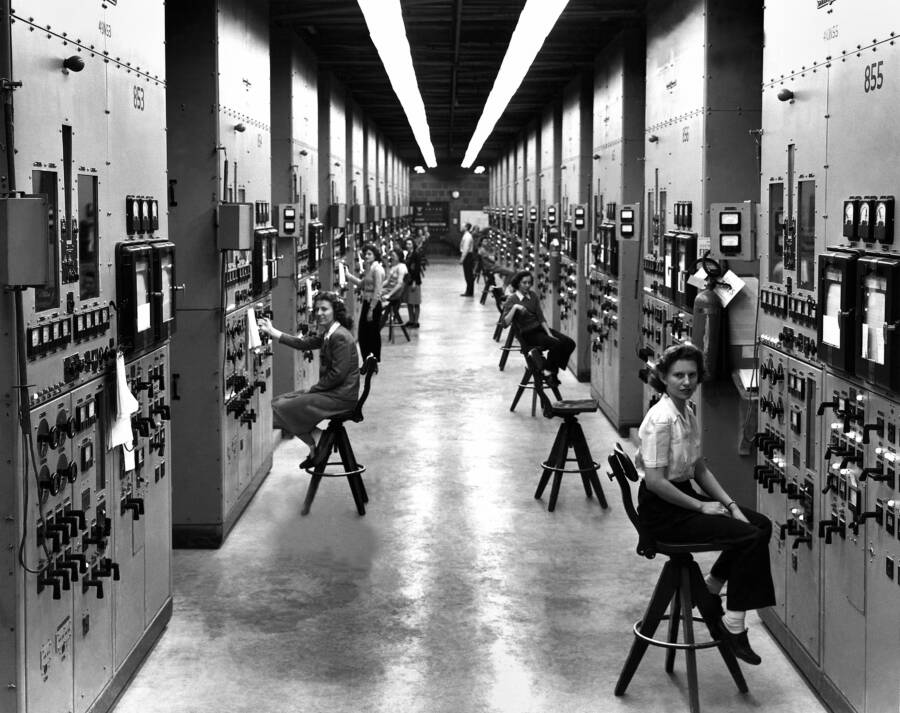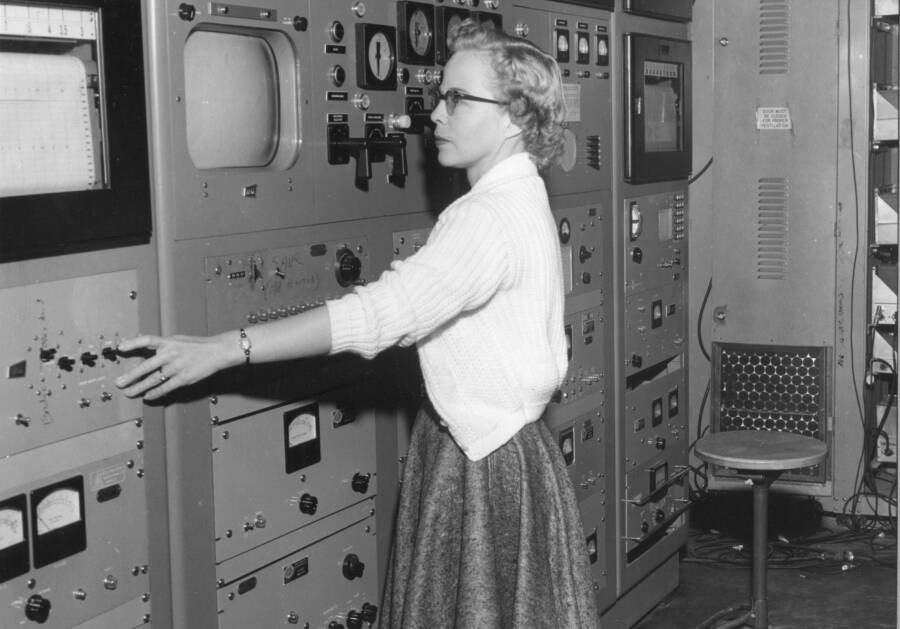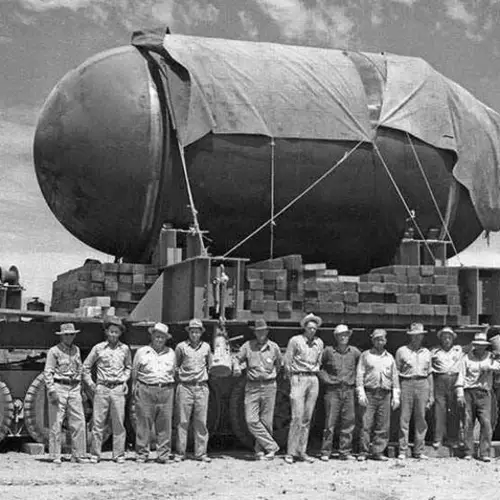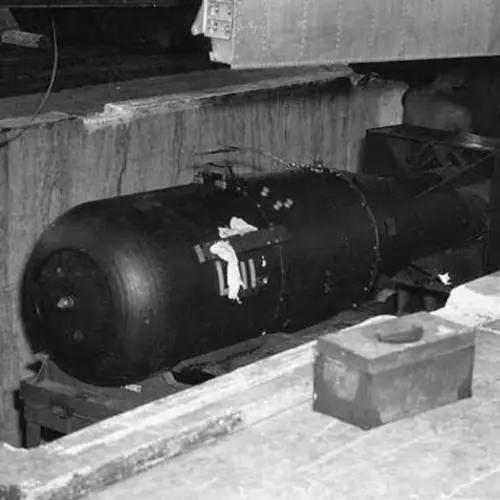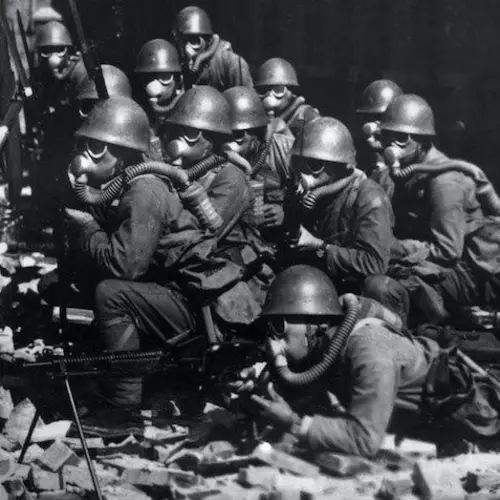Not even the workers in Oak Ridge, Tennessee, had a clue as to what they were doing — which turned out to be refining the uranium for the atomic bombs dropped on Hiroshima and Nagasaki.
None of the students at the Oak Ridge high school in Oak Ridge, Tennessee could have imagined what the assembly was about that day in November 1942. After all, strange and unusual things rarely happened in their tiny rural Tennessee community. People here had been farmers for generations and life was quiet and simple.
Their imaginations would have to do the bulk of the work for months to come seeing as the students were told virtually nothing. "I have just gotten a phone call from Senator McKellar," the school’s principal told the students. "He wants me to tell you to go home and tell your parents you are going to have to find another place to live."
There was no further explanation as to why. All the students were told was this: "The government is going to take your property for the war effort."
For the next three years, the small town Oak Ridge became one of the most important places on Earth for the development of the atomic bomb. But this would remain secret even to the people forced to leave there.
Thus began the mass displacement of some 3,000 small-town families and farmers for the undiscloses purposes of the highest echelons of the American government.
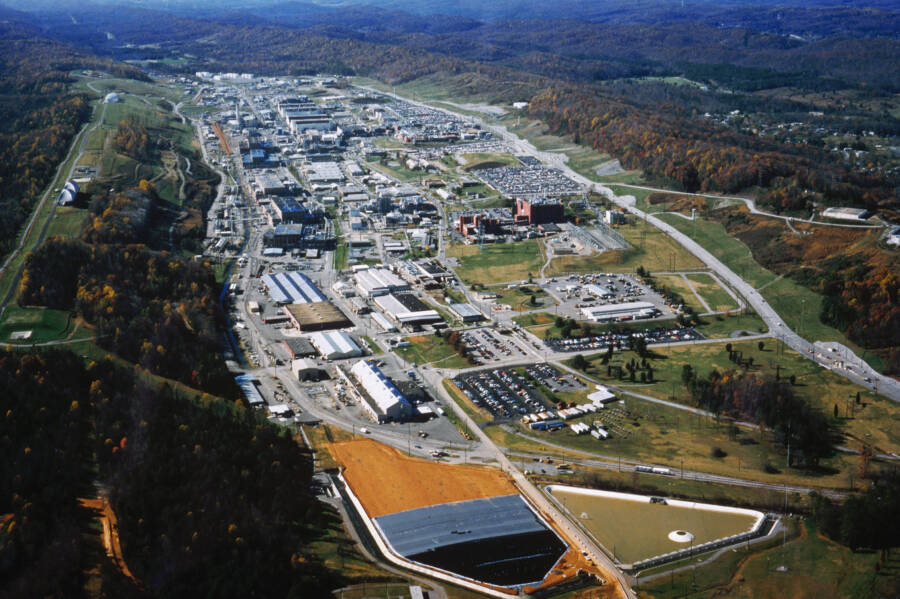
An aerial view of the Oak Ridge plant.
The Manhattan Project Comes To Oak Ridge
None of them knew it, but the people of the small Scarboro community at Oak Ridge were kicked out of their homes for an experiment that would change the course of human history. Their homes were about to become a key site of the Manhattan Project: the construction of the first atomic bomb.
More specifically, the Oak Ridge site would create the enriched uranium used as fuel for the first atomic bombs.
The work conducted at what would become the Oak Ridge National Laboratory would lead to some of the most incredible scientific breakthroughs of the 20th century, including the construction of atomic bombs capable of leveling the city of Hiroshima and killing around 120,000 people.
And it would be one of the most vital military secrets ever kept. Not one thing that happened in Oak Ridge could ever reach the ears of Germany or the Soviet Union lest America risk the power of the atomic bomb slipping into the wrong hands.
Oak Ridge was the desired location for its isolation which including some Native American families, housed only 3,000 small-town farmers that needed to be displaced. But these people forced out of their rural homes couldn't be given any word of explanation.
Instead, the military simply left signs on their doors giving them as little as two weeks to — as the note put it — "forthwith vacate said premises immediately."
Meanwhile, tens of thousands of people the government brought in to work in Oak Ridge — which, at its peak, employed more than 75,000 people — could also never be told what exactly they were doing there. They would be running nuclear experiments designed by brilliant scientists such as Robert Oppenheimer and Enrico Fermi without any clue as to what their work was actually meant to do.
Nonetheless, 59,000 acres of land along the Black Oak Ridge were chosen by General Leslie Groves as the site to construct a city in which to house some 30,000 plant workers and four key facilities in the plant itself.
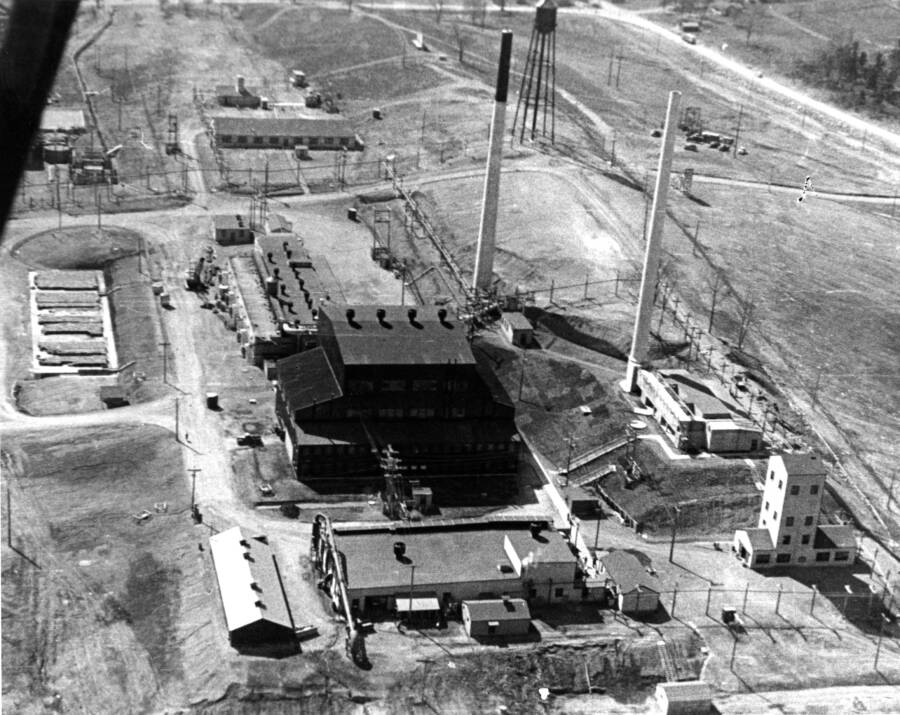
DOE-Oak Ridge, FlickrThe graphite reactor at Oak Ridge Laboratory.
Building The Oak Ridge National Laboratory
The first of the four key facilities in the plant was the S-50 plant which would partially enrich uranium through the process of liquid thermal diffusion. Next, a second plant, known as K-25, would receive this uranium and further enrich it through gaseous diffusion.
Then, the electromagnetic Y-12 plant would enrich that product even further. Finally, the Oak Ridge National Laboratory would receive the fully enriched plutonium for use in the X-10 graphite reactor, the first continuously-operated nuclear reactor ever built.
Constructed between 1942 and 1943, these four facilities were located in valleys away from the town for added security and protection in case of an accident. The whole area was given the name "Site X" and then "Clinton Engineering Works" before reverting back to Oak Ridge following the war.
The Oak Ridge National Laboratory remains active today as a research center for energy and physics.
The Difficulties In Displacing A Rural Town
While relatively few families actually have to be removed from their homes in order to set up the Oak Ridge National Laboratory, these families not only required compensation for their troubles but also had to come to terms with abandoning their homes.
"Everybody was very confused and very sad. It came so quickly, and everybody had to get out right away," one woman recalled of the experience for her family.
Some of these families also never received the appropriate compensation for their farms. The owner of a 60-acre plot, for instance, received but $825 for it. According to a 1942 report in which an acre was valued at about $34 each, that farmer should have received almost double what he was given by the government.
"They didn’t pay enough to replace the type of place that you had. We were very poorly paid for the land, and also we had a lot of people who were looking for land, so that made it hard," Reba Holmberg, whose family was displaced during this time, shared.
Further, many of these poorer families didn't even have the means of relocating. They didn't have cars or didn't have the money or connections to go elsewhere. While some found opportunities at the new Oak Ridge Laboratory, many others had to find a way to travel at least 14 miles to the nearest town to resettle.
While families were willing to support the war effort, they nonetheless were shaken by the sudden need to abandon their land, some of which had been in their families for generations, and for which they oftentimes were not properly compensated.
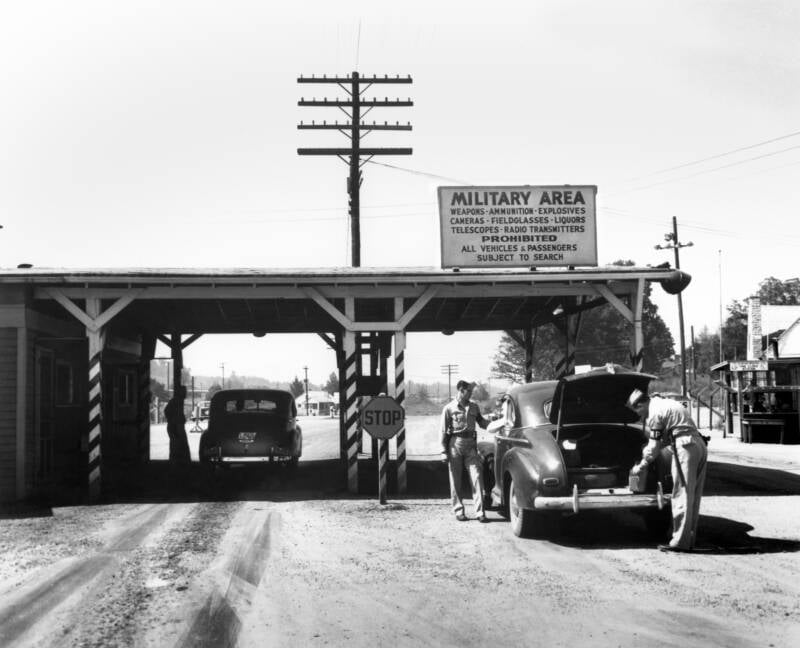
DOE-Oak Ridge, FlickrBecause secrecy was so important at Oak Ridge, getting in and out of the town itself was difficult. Workers at the plant were even subjected to routine lie detector tests.
When the new workers arrived in droves for their covert duties at the plant, the small town of Oak Ridge, Tennessee swelled to the fifth-largest city in the state following the war.
Secrecy At The Oak Ridge National Laboratory
The workers at Oak Ridge, for their part, had no idea what they were actually doing.
After the war, when the secret work at Oak Ridge became public, a reporter for Life Magazine went to the site. He cornered a worker, set up his tape recorder, and begged him to explain in as much detail as possible just what it was he had done there for the Manhattan Project.
The worker reflected for a moment on the work that consumed the last three years of his life, then said: "I don’t know what the hell I’m doing."
He wasn’t alone. Hardly anyone in Oak Ridge knew the purpose of their work. They were given simple instructions for their tasks but were never told what they were working on nor were they allowed to ask a single question.
One worker shared his role which sounded like something straight out of The Jetsons:
"I stood in front of a panel board with a dial. When the hand moved from zero to 100 I would turn a valve. The hand would fall back to zero. I turn on another valve and the hand would go back to 100. All day long. Watch a hand go from zero to 100 then turn a valve. It got so I was doing it in my sleep."
It turns out even the people in charge, for the most part, didn’t know what they were doing either.
"It wasn’t that the job was tough... It was confusing," one man named George Turner, who managed a team at Oak Ridge, would admit. "You see, no one knew what was being made in Oak Ridge."

Pictorial Parade/Archive Photos/Getty ImagesA security sign posted on a shed along highway at Oak Ridge, Tennessee. October 1945.
Oak Ridge Worker Theories
The workers had theories, though. Some figured they were making synthetic rubber, while others joked they were making campaign buttons for Franklin D. Roosevelt’s fourth term.
One was pretty sure they were making liquor. "I thought they were making sour mash [whiskey] to drop on the Germans," Benjamin Bederson would tell <em?The New York Times. "Get them all drunk."
But that wasn’t even the most outlandish theory. A handful of workers believed that Oak Ridge was an experiment in socialism: a model community designed to prepare the American people for Communist rule.
Security At Oak Ridge
Getting in and out of Oak Ridge wasn’t easy. The city was surrounded by guard towers and a fence with seven gates with armed men constantly patrolling the perimeter.
Every person who entered had to sign a security declaration. The mail they sent out was carefully censored, and, at times, the workers would be hooked up to lie detectors and grilled on what details they’d shared.

DOE-Oak Ridge, FlickrNeedless to say (pun intended), the people of Oak Ridge knew mum's the word.
Signs loomed over every corner of the town and warned citizens that: "Loose talk helps out enemy" and "Let’s keep our trap shut."
Everyone there knew to obey and knew that if they did talk, they wouldn't be in Oak Ridge the next day.
Perhaps the idea that Oak Ridge was a Communist experiment at a time when anti-Communist fears and attitudes were high wasn’t that much of a stretch.
Despite all these precautions, however, a handful of secrets slipped out. A 1943 issue of Business Week managed to work in an interview with an Oak Ridge worker named Mary Anne Bufard, who described what she thought was an absurd job:
"It just didn’t make any sense at all...The uniforms were first washed, then ironed, all new buttons sewed on and passed to me. I’d hold the uniform up to a special instrument and if I heard a clicking noise — I’d throw it back in to be done all over again. That’s all I did — all day long."
To Bufard, it was a funny story — but to a knowledgeable enemy, it could have been clear evidence that the Americans were using Geiger counters to test the radioactivity of their clothes.
There were, of course, a few slips in the secrecy and security at Oak Ridge.
Most notably, a Soviet spy named George Koval managed to procure an assignment at Oak Ridge — and even gained top-secret security clearance.
He was present when America’s top scientists realized how to use polonium initiators to make nuclear chain reactions which galvanized the finalization of the atomic bomb.
He memorized every detail he could, sent it off to Moscow, and even managed to convince the U.S. military to send him off to the lab where the polonium initiators were being created to watch the process first-hand.
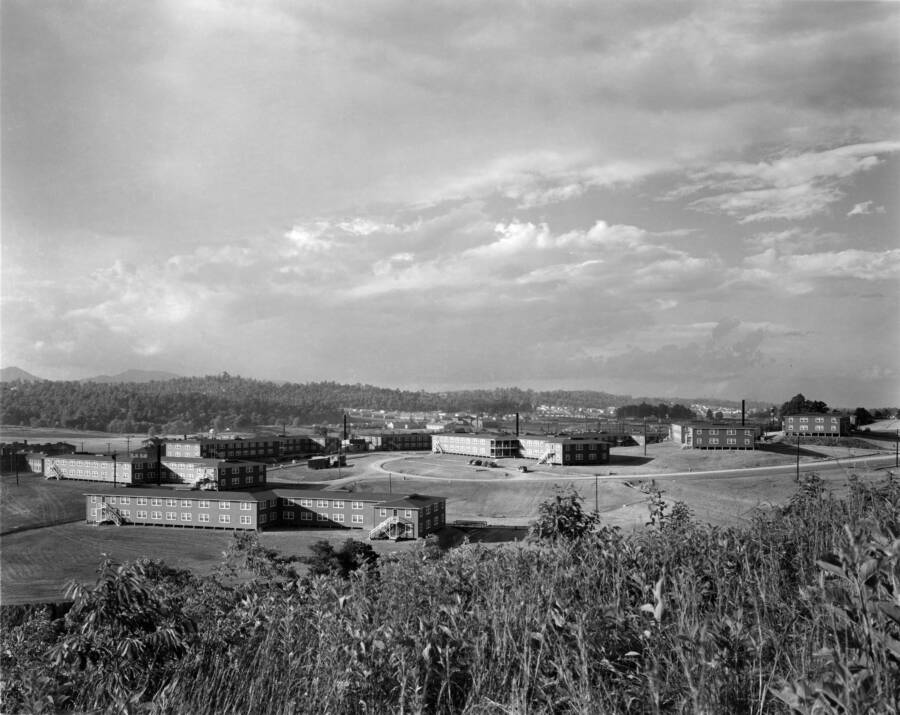
Chicago History Museum/Getty ImagesDormitory buildings used to house the workers of Oak Ridge, Tennessee. July 12, 1944.
According to Russian President Vladimir Putin, Koval’s work "helped speed up considerably the time it took for the Soviet Union to develop an atomic bomb of its own."
Slips like these were rare, but even the tiniest leak of information could change the balance of power.
Meanwhile... Life In Oak Ridge
Keeping up the morale at the plant was difficult seeing as workers didn’t have a clue about what they were doing. People working in the Oak Ridge National Laboratory were struggling with a sense of purposelessness as they turned apparently meaningless dials.
So, the military figured they had to keep the workers distracted. They built a community called Happy Valley, a government-constructed town meant to house and entertain the tens of thousands of workers of the Manhattan Project at Oak Ridge.
What had once been nothing but farmland was now a bustling community with 10 schools, 13 supermarkets, 16 baseball parks, and a whopping 36 bowling alleys.
Everyone did something for recreation. The town of 75,000 had its own baseball league with 10 teams, an even bigger football league with 26 teams, and 10 separate softball leagues with 81 teams in all.

FlickrAt a glance, Oak Ridge was just another small town.
They even had a symphony orchestra, organized by biochemist Waldo Cohn, that rehearsed in the high school gym. Only in Oak Ridge could the residents boast that they had an orchestra before they had sidewalks.
But even with all these distractions, people still struggled to stay entertained. During the Manhattan Project, the population of Oak Ridge boomed at an unnatural rate. As one resident would joke, having kids was "pretty near all there was to do in those days."
Segregation In Oak Ridge
If life was hard for the white workers, though, it was far worse for the black ones. Like most places in America at the time Oak Ridge was segregated.
While the white workers were given houses in Happy Valley, their African-American counterparts were forced to live in trailers in Gamble Valley.
Their homes had no running water and the sinks drained into buckets that had to be emptied. Meanwhile, the houses were heated only by the crude oil stoves they were given for cooking, which had a bad habit of catching on fire.
In fact, the black workers were kept so far away from their white peers that most had no idea what kind of conditions they were living through.
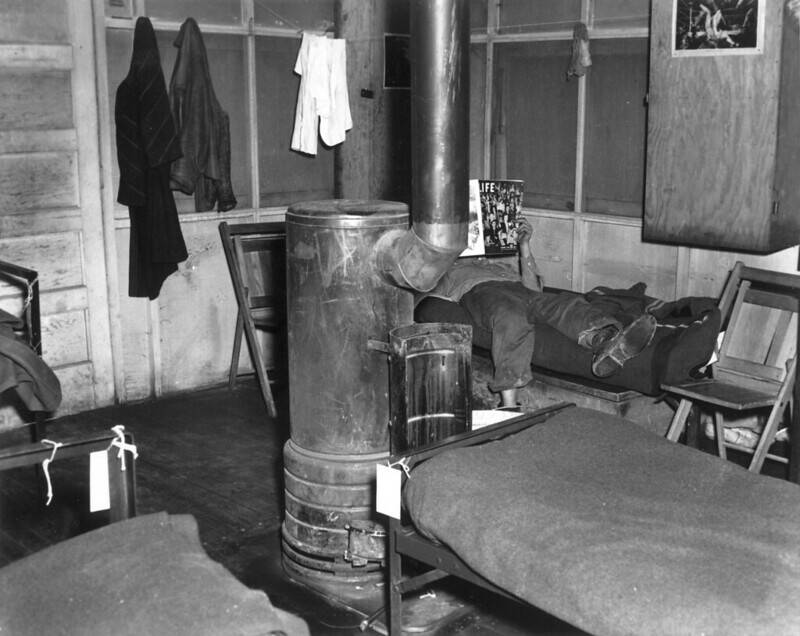
FlickrHousing for people of color in Oak Ridge.
The segregation was so stark that the black community at Oak Ridge would go on to be described as "the most deliberately isolated black community in the country."
The End Of The War
As it turns out, the workers at Oak Ridge would finally discover what they were doing the same time as everyone else: Aug. 5, 1945 — the day the first nuclear bomb fell of Hiroshima.
Five square miles of a Japanese city was burned to ashes and 120,000 initially left dead or injured. 100,000 more would later die from radiation-based complications.
But back home at Oak Ridge, 75,000 people were picking up the newspaper to find out that they were responsible.
"Oak Ridge Attacks Japanese" was printed on the front page of the local newspaper and posted above a letter written by U.S. Secretary of War, Robert Patterson.
"Today the whole world knows the secret which you have helped us keep for many months," the letter read. "I am pleased to be able to add that the warlords of Japan now know its effects better."
For the workers of Oak Ridge, it was a strange moment. After years of seemingly meaningless work, they suddenly realized that they’d been designing a machine of mass destruction.
"Something turned over inside me when I heard the news," one worker said, admitting: "I had no idea what I was working on."
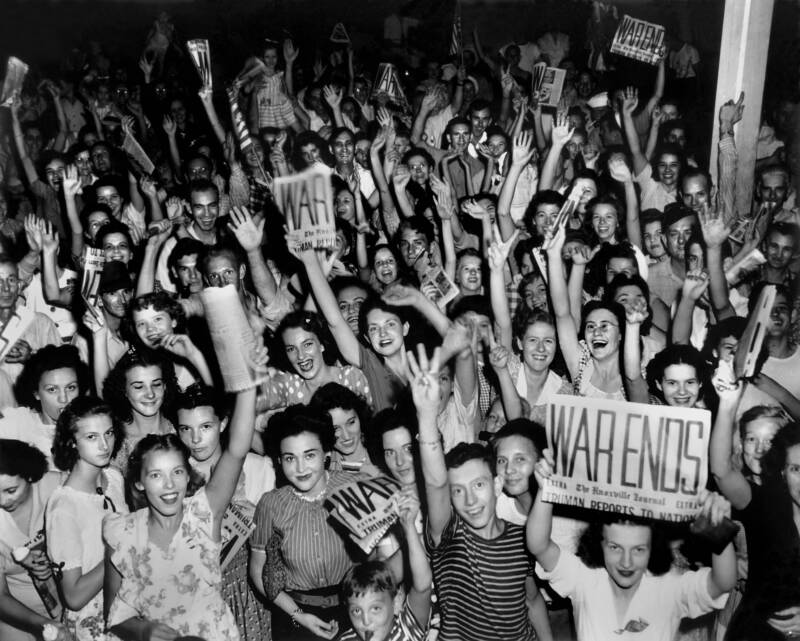
Galerie Bilderwelt/Getty Images"Victory Over Japan Day" in Oak Ridge, Tennessee. Sept. 2, 1945.
One woman would later recall her supervisor rushing over to her and excitedly asking: "Did you know what was going on here?"
It was a shock to her; she’d always assumed that at least the people in charge knew what was going on. But as she found out, her boss was every bit as clueless as she was.
The Atomic Bomb: A Tool For Peace Or Destruction?
For the most part, the people who worked on the Manhattan Project at Oak Ridge celebrated. The bomb, they were told, was "expected to save many lives." The Japanese surrender that came days after the bombs fell seemed to prove that this was true.
Others were just thrilled that they could finally go home. The city wouldn’t entirely shut down — some of the reactors are still in use today — but most of the workers were no longer needed. By the end of the year, the population would be cut by almost 50 percent.
The war was over, and they could leave feeling patriotic about what they’d done.
But some workers also understood there was something terrifying about their accomplishment. As one woman wrote in a letter to her family:
"Let’s hope and pray that it does one good thing and then is never used again."
After this look into the top-secret town of Oak Ridge, Tennessee, read about the secret Soviet communities that housed Stalin's nuclear program. The, learn about the nuclear devastation caused by the Little Boy atomic bomb on Hiroshima.
